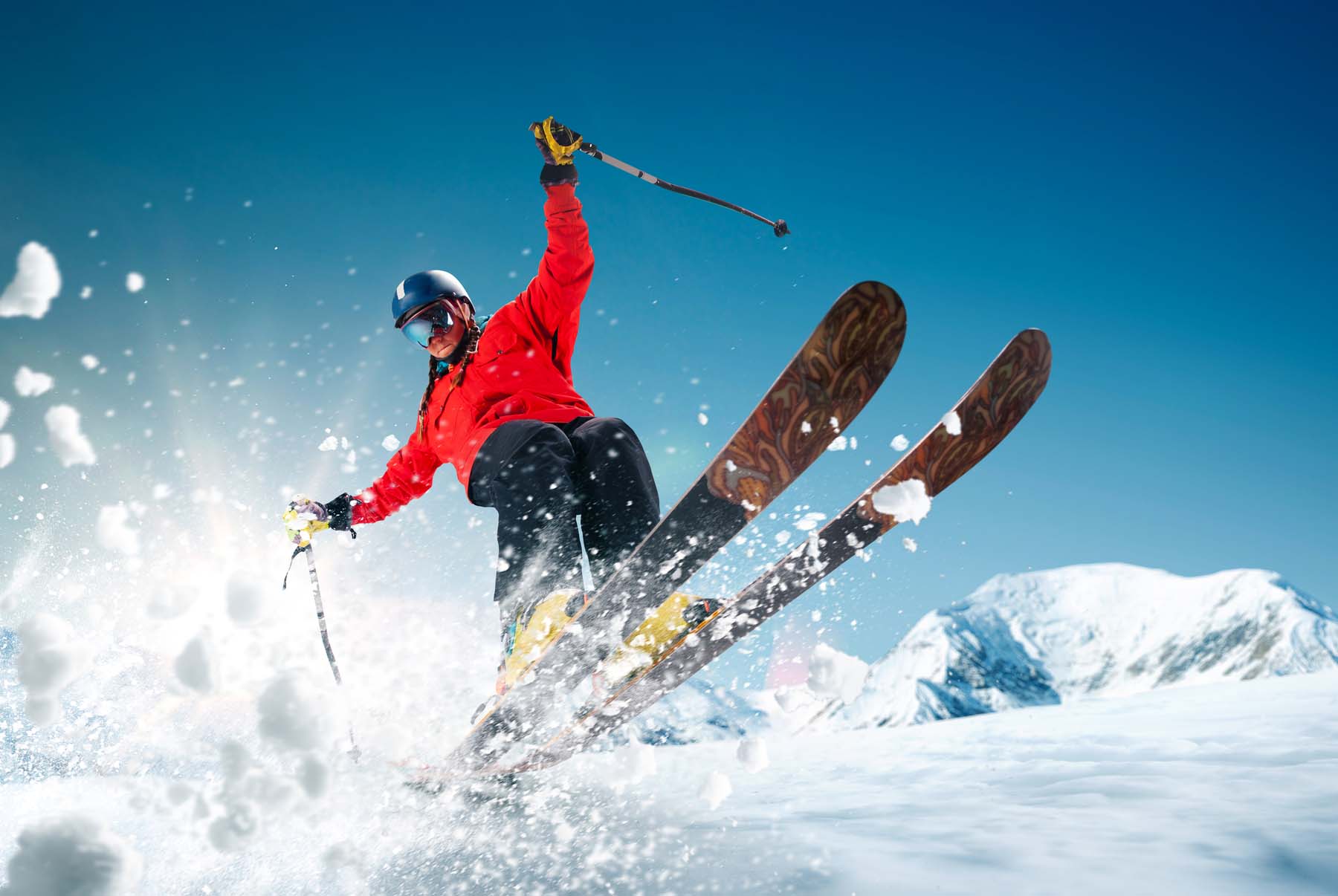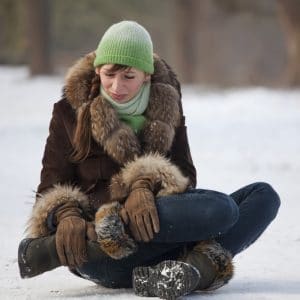
As the 2024 ski Season gets underway and the thrill of the powdery slopes draws you to the mountains, it’s essential to be aware of the potential injuries and how to prevent them.
Knee Injuries
Acute knee injuries account for 30-40% of all injuries in alpine skiing. The most frequent and serious injuries are ligament injuries due to the twisting motion during falls or from direct trauma to the knee when skiing.
Tears in the anterior cruciate ligament (ACL) or the medial collateral ligament (MCL) are top candidates for most knee snow skiing injuries.
With ACL tears, you may hear a pop in the knee and then experience painful inflammation that leads to a poor range of motion and soreness in the knee.
MCL tears are usually the result of impact to the outside of the knee that drives the joint inward. This usually leads to pain, swelling, instability, and weakness on the inside of the knee.
Shoulder Injuries
Dislocated shoulders are another common injury resulting from a nasty fall. Here, the head of the upper arm bone, the humerus, pops out of the shoulder socket due to the impact of a collision or fall. This type of injury can be excruciating.
Other upper arm injuries include humeral fractures and clavicle (collar bone) fractures or dislocation.
Skier’s Thumb
A Skier’s Thumb injury occurs when the ulnar collateral ligament (UCL), which runs along the ulnar side of the metacarpo-phalageal joint of the thumb, comes under undue stress or becomes torn.
It’s often the result of a skier trying to catch or slow their fall with the ski pole still in their hand. When the thumb is severely bent sideways or backwards, it can lead to a strain or outright rupture of the UCL, which many people call Skier’s Thumb.
Check out our Snowboarder’s Wrist article for other hand and wrist related injuries.
Ankle Sprains
Ankle sprains are common injuries among skiers, and for a good reason. A sudden, awkward pivot to stop or slow down can easily roll the ankle and send a skier to the ground. Even though ski boots often provide good support and stability, it’s not always enough for beginners who don’t have ankles conditioned for skiing.
These injuries are often sustained off the slopes or slippery, uneven snow when walking on ice.
Head Injury
Head injuries are one of the most serious risks in snow skiing. From a beginner to the most experienced skier, anyone on the slopes can suffer an unexpected head injury.
Head injuries from skiing can range from mild bumps and cuts to severe concussions or even death from excessive brain trauma.
Spine Injuries
Probably the most common type of spine injury is Whiplash. This is caused when a skier or snowboarder stops suddenly by running into another skier or stationary object. The neck can bend too far backward or too far forward. In more serious cases, this can cause a fracture in the upper cervical vertebra.
A common injury to the lumbar spine is a burst fracture. This occurs when you land on your feet or bottom, and the force is transmitted up your spine, causing a starburst pattern fracture in a vertebra.
Ways to Prevent Skiing and Snowboarding Injuries
Improve your general fitness
Like all sports, injuries are much less likely to occur if your general level of fitness is high. For skiing, improving your strength and stamina can go a long way to preventing injuries. You must build up your cardiovascular fitness before hitting the slopes by doing activities such as running, cycling or swimming. It takes time to build up your fitness, so you need to be working on this for at least 4 to 6 weeks.
Build strength
The muscles in the legs aren’t accustomed to the forces placed on them during skiing so many injuries happen at the start of a holiday. It may be seen as ‘unlucky’, but skiers whose muscles aren’t ready for the extra exertion of skiing cannot control their leg position or withstand changes in force placed on the knees from a minor bump or twist.
Before going, strength and conditioning exercises can help; these are best done with the guidance of a physiotherapist or strength and conditioning coach.
Warm-up
In case anyone may be confused, “warming up” in this instance refers to starting slowly to allow the body to adjust to the slopes and conditions instead of warming yourself in the lodge by the fire.
Warming up and stretching before you head out in the morning means that the muscles are activated and are ready for exertion. The neuromuscular control (brain to legs) and proprioception keep the legs steady and respond and adapt to twists and turns and uneven surfaces during skiing. Getting your heart and blood pumping is also important; carrying your skis from your car or accommodation to the slopes and trudging up to the ski lift can work wonders for warming the muscles.
Even expert skiers will take time doing easier runs, allowing the body, the joints and all the soft tissue to warm up and become more flexible before the demands on the body becomes greater. Don’t make the day’s first run a red or a black!
Equipment
Like any high-risk sport, one of the most important ways to prevent skiing injuries begins with proper gear. Every piece of gear matters from ski boots and skis that are correctly fitted, goggles and gloves, to a helmet that’s safely secured over the head for as much protection as possible.
Helmets
Head trauma can be life-altering, so you want to do everything that you possibly can to prevent this. First and foremost, a helmet will reduce the severity of a head injury. While it will not completely prevent a head injury, it can significantly affect the outcome.
Boots and Bindings
Stiff boots are no longer necessary, and instead, you should opt for a softer flexing boot in the forward and back plane with rigid lateral stability.
Your ski binding release (DIN setting) being too tight is a common cause of Knee (ACL and MCL) injury. This setting allows your boot to come out of the ski when you twist at low speed, where there’s the highest risk of injury, and at high speed falls. You should keep lowering the ski binding setting until you find the lowest level you can ski at without coming out of the binding in your regular skiing. If you are renting, the ski shops will carefully set the bindings based on your height, weight, and skiing ability that you report.
Doing this will dramatically decrease your chances of a knee ligament injury, especially an ACL injury.
Brace yourself
Knee braces can be an excellent way of reducing injury in combination with training in the run-up to your ski trip. Many different braces can be used, from simple hinge braces to advanced support for people who have previously suffered a specific injury.
Wrist Guards
Snowboard wrist guards are an essential piece of kit, especially if you are a beginner, an aggressive park rider, or have weak wrists. Ideally, you should buy ones that don’t just cover the wrist but also extend higher up the forearm.
Learn How to Fall Properly
For most, falling is inevitable, but you can protect yourself from injury by falling correctly. The natural human reaction is to put your hands out to break your fall, but try not to do this as it hugely increases your risk of wrist injuries. Also, if you panic and splay your legs, it leaves you vulnerable to catching your skis and causing lower limb injuries. After a few painful falls, you will learn to detect the warning signs; if you know you will fall, let it happen. A purposeful fall is safer. Try, if possible, to roll with the fall or flop onto your side and skid to a stop.
Proper lessons will teach you to stop, fall and control your speed.
Know your limits
Whilst striving for the black runs is the goal of most skiers, remember that the secret to avoiding injuries is knowing your limits. Most injuries are caused by skiing or snowboarding on slopes above your level of competency. Sharp, out of control turns can cause havoc with the knees’ anatomy and hugely increase your risk of falls, so master the level you’re at before taking on more challenging routes. The same goes for tricky conditions; icy slopes can make even the most accessible pistes more difficult, so take it easy when the snow isn’t powder.
Know Safety Rules
Understand and abide by all rules of the ski resort. Know general safety rules of skiing, such as safely stopping, merging, and yielding to other skiers. Never ski off-piste when there is a risk of avalanche.
Avoid Alcohol at Lunch
Alcohol and skiing make a dodgy cocktail. Alcohol compromises your concentration and reaction time while lowering your inhibitions. Drink and ski at your peril.
Avoid that ‘One Last Run’
It’s tempting to keep going and have that final run before the lifts shut. It is often when injuries happen. Leave the slopes on a high, rather than when you’re exhausted, to avoid injury.
Take the lift at the end of the day; The runs back down to the resort are often icy, patchy slopes, crowded with tired skiers and are a hot bed for injury. Be cool and take the lift.
Seek Advice Immediately After an Injury
Resist the temptation to plough on after an injury. Ski-clinics are well-versed in treating common injuries: heeding their expert advice will help you last the season.
Skiing holidays can be expensive, and having your ski time cut short by injury can be frustrating and disappointing. Following this advice can help you enjoy your skiing and make your holiday one to remember rather than one to forget.’
At London Bridge Orthopaedics, we have specialist consultants who cover every area of the body and are all experts in their field. If you have any concerns regarding pre-existing injuries or have injured yourself while on the slopes, please book an appointment straight away.
Our consultants are covered with all the major insurance companies, and we also offer self-pay appointments.









